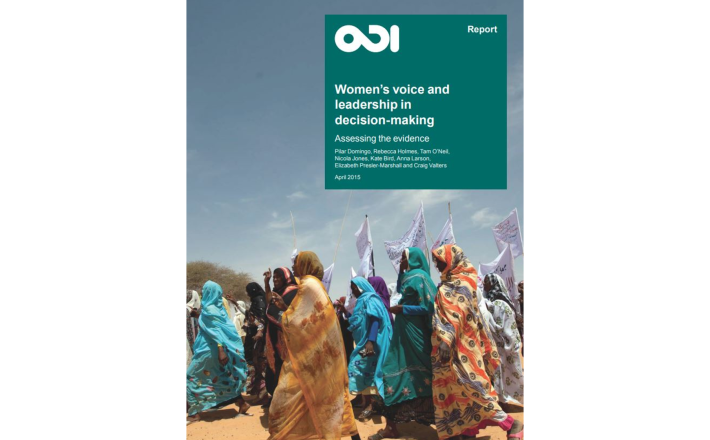Women’s voice and leadership in decision-making
The report looks at whether women’s capabilities and actions in different spheres lead them to have more presence and influence within private and public decision-making. Based on a review of over 400 sources, the report is organised around thematic chapters on women's:
- political participation, including in peace processes, constitutional reform, political parties and through quotas;
- social activism, through social mobilisation and social accountability processes; and
- economic empowerment, through access to financial and productive assets and the labour market.
Overall, it is known much more about women’s exercise of voice, than about when and how they are effective leaders and influencers. A large body of research clearly shows that a woman’s ownership of assets and employment can increase her power within the household, but little is known about how this effects her public power. While increases in the number of women in leadership positions is itself a measure of gender equality, there is no automatic link between increases in the power of individual women and more equitable political settlements or improved outcomes for women more broadly. However, the evidence is unequivocal that women women’s collective action through social movements, political coalitions and economic associations has driven legal, policy and social norm change in many countries. What is less understood is how different political settlements shape women's power and influence, and how women in public navigate and reshape gendered institutions, relationships and networks.
Click here to see the report.

The report looks at whether women’s capabilities and actions in different spheres lead them to have more presence and influence within private and public decision-making. Based on a review of over 400 sources, the report is organised around thematic chapters on women's:
- political participation, including in peace processes, constitutional reform, political parties and through quotas;
- social activism, through social mobilisation and social accountability processes; and
- economic empowerment, through access to financial and productive assets and the labour market.
Overall, it is known much more about women’s exercise of voice, than about when and how they are effective leaders and influencers. A large body of research clearly shows that a woman’s ownership of assets and employment can increase her power within the household, but little is known about how this effects her public power. While increases in the number of women in leadership positions is itself a measure of gender equality, there is no automatic link between increases in the power of individual women and more equitable political settlements or improved outcomes for women more broadly. However, the evidence is unequivocal that women women’s collective action through social movements, political coalitions and economic associations has driven legal, policy and social norm change in many countries. What is less understood is how different political settlements shape women's power and influence, and how women in public navigate and reshape gendered institutions, relationships and networks.
Click here to see the report.